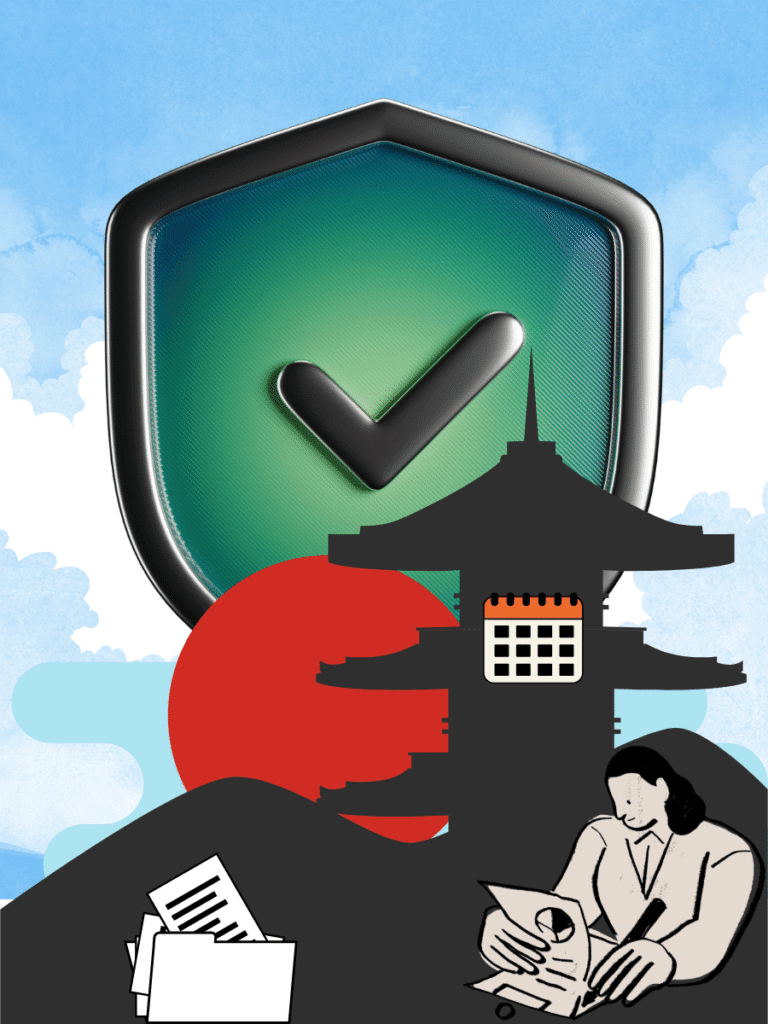Due to global competition today, recognising intellectual property (IP) rights is just as important for strategy as it is for meeting legal obligations. Any business hoping to expand in Japan which is famous for its thriving economy, new business ideas, and customers’ trust should make sure to protect its trademarks carefully. Japan trademark filing is not just a formality; it’s a strategic necessity for brand protection in this market. Nevertheless, to register a trademark in Japan, you must learn more than the basic rules.
Preliminary searches, the step-by-step filing process, anticipated time frames and post-trademark registration requirements are all explained within this guide to trademarks in Japan. By describing JPO functions and spelling out the protocols for both domestic and international applicants, this resource empowers legal experts, Japanese enterprises and brand owners to handle trademarking and enforcement operations in Japan.
Introduction
When the world of international trade changes, it is important for companies to guard their property rights to maintain and protect their brand image. Businesses of all kinds find Japan a good place for profitable operations because it is a top economic market. However, the complexities of its legal system require a comprehensive knowledge of the Procedure for trademark filing to guarantee efficient safeguarding of brand identity.
This blog gives a complete overview of the process stages, deadlines, and governing bodies involved in submitting a brand enrolment request in Japan. It explores the crucial preliminary factors and considerations, describes the filing processes and review methods, and emphasises after-registration duties. By explaining the functions of the Japan Patent Office (JPO) and other relevant organisations, this tool intends to provide legal professionals, companies, and trademark holders with the necessary understanding to manage Japan’s trademark registration system effectively.
Governing Authority
The Japan Patent Office (JPO), functioning under the Ministry of Economy, Trade and Industry, is the main body for controlling trademark registrations in Japan. The JPO is responsible for checking, approving, and managing trademark rights. For foreign applicants without a fixed domicile in Japan, it is mandatory to appoint a local representative, such as a registered patent attorney (Benrishi), to act on their behalf during the application filing process.
Pre-Application Consideration
Basic Trademark Search: Conducting a detailed search is important so that the given trademark doesn’t match or clash with the existing registered trademark. Using programmes such as the Japan Platform for Patent Information (J-Plat Pat) can help in finding possible conflicts and examining the chance of attainability of the desired trademark.
Distinctiveness: The trademark has to have distinctiveness for able to get registered in Japan. Generic or descriptive terms are commonly not registerable unless they have gained distinctiveness by extensive use.
Classification of Goods and Services: The filing party or the aspirant must rightly classify the goods and services according to the NICE Classification System. Wrong Classification can end in application rejection or improper protection.
Application Procedure
The following are the necessary documents, and the application must include—
- Complete applier details.
- Clear illustration of the trademark.
- List of products and services.
- Power of attorney, in case an agent files the application
- Priority documents, if claiming priority under the Paris Convention.
Submission Process: Application can be filed directly through the JPO or the Madrid Protocol if the applicant is an international/foreigner. And for overseas residents, papers will be submitted through an agent or representative in Japan.
Then there will be the Examination Process; for formal examination, the JPO will do a basic review to ensure that the documents are under the procedural requirements. Such documents are complete and are in accordance with the filing protocol then After doing this formality, there will be a Substantive Examination, in which the JPO will check the trademark registrability, including checking for similar or existing trademarks, and compliance with social order and morality standards. If the examiner finds that our trademark is not registrable, a notification of the reason for the refusal is generated, giving the applicant a chance to respond within a time span of three months.
Timeline
The examination procedure generally takes a time span of 6 to 8 months. Quick/Fast examination is also available for certain conditions.
Then there will be Publication and Opposition. After passing the examination, the trademark will be published in the Official Gazette, so that third parties can check the application. And there is a 2-month period during which third parties can apply for oppositions against the trademark registration, providing potential conflicts or legal grounds for refusal.
If no one opposes the trademark or if the applicant wins the opposition, the JPO grants a registration certificate. The trademark remains valid in Japan for 10 years from the registration date. Owners must file for renewal within 6 months before expiry, and they can renew it indefinitely for 10-year periods.
Cost and Charges: The application fees include the government fees, agent fees, and charges for managing opposition, if any. Applicants must pay the fees within 30 days of the registration announcement. They can pay the registration fees in two instalments, and they may choose to pay the renewal fees either in full or in two instalments.
Tactical Consideration
Japan functions according to a “First-to-File” principle, which means that the first person who files a trademark will have the upper hand over the other party, irrespective of past use. If the trademark owner does not use the registered trademark within 3 years in Japan, the other party can request cancellation on grounds of non-use.
Additionally, due to the Madrid Protocol, the applicant enjoys international protection in member countries through a single application.
Conclusion
Protecting Trademarks in Japan needs proper planning and consideration that aligns with the JPO procedural criteria. There will be a need for a qualified professional, such as a registered patent attorney (Benrishi), who provides professional services as being expert in this field in which you can get robust protection of your brand and trademark in the Japanese market.
References
- Japan Patent Office, ‘Procedure for obtaining Trademark Rights’ (May 24, 2025) https://www.jpo.go.jp/e/system/trademark/gaiyo/trademark.html
- Japan Platform for Patent Information, ‘J-Plat Pat’ (24 May 2025), https://www.j-platpat.inpit.go.jp/s0000/en
- Japan Patent Office, ‘International Trademark Application-Madrid Protocol’ (24 May 2025), https://www.jpo.go.jp/e/system/trademark/madrid/index.html







